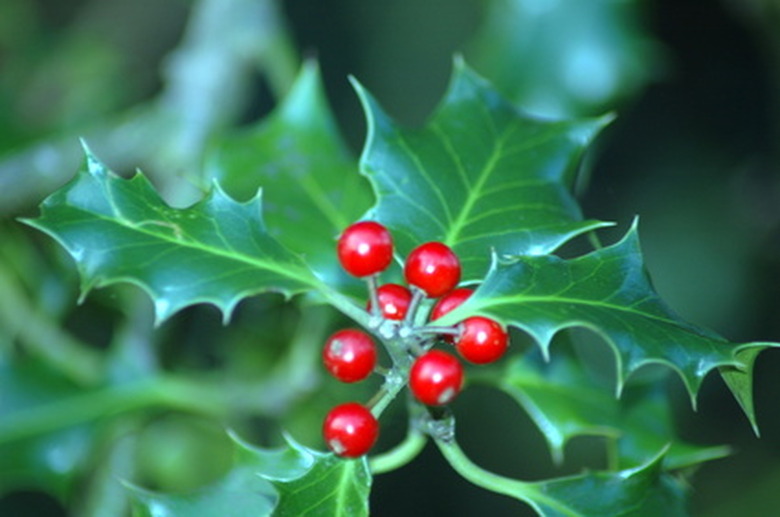Evergreens For Indiana
Every landscape design benefits from the inclusion of evergreens, especially in areas that have cold, gloomy winters. The USDA Plant Hardiness Zone map classifies much of Indiana as zones 5 and 6. The winters don't have extreme cold and snowfall, but they receive enough to create drab, muddy conditions. Evergreens bring vitality and color to counteract the effects of Indiana winters.
American Arborvitae
A native to the eastern part of the United States, American arborvitae (Thuja occidentalis) thrives in Indiana. The needled evergreen reaches heights of 60 feet in the wild, but keeps a more manageable height of 20 to 30 feet in the home landscape. Also known as eastern or northern white cedar, the American arborvitae grows in a pyramidal form. The tree grows best in full sun to partial shade. While it tolerates many soil types, it does not do well in dry conditions and performs better in well-drained loam. The low maintenance needs make the tree a great choice. Some things to watch for include bagworms, leaf blight and heavy ice or snow damage.
- Every landscape design benefits from the inclusion of evergreens, especially in areas that have cold, gloomy winters.
- The winters don't have extreme cold and snowfall, but they receive enough to create drab, muddy conditions.
Marginal Wood Fern
The marginal wood fern (Dryopteris marginalis) grows wild in North American woodlands. The green-gray fronds retain their color through the winter, adding interest to shady landscapes. Reaching 2 feet tall and wide, the fern has an upright habit. The marginal wood fern requires partial to full shade and fertile soils. Easy to maintain, with few problems with disease and insects, the plant makes an excellent choice for an Indiana landscape. Plant it in groupings or as a specimen amongst other shade loving plants.
Wintergreen
For an evergreen ground cover, choose wintergreen (Gaultheria procumbens). The plant–also a native to eastern North America–forms mats reaching only 6 inches high with a 1-foot spread. The nodding, white flowers of early summer form long-lasting bright red berries. The plant perfumes the air with the scent named for it, wintergreen. The broadleaf evergreen leaves turn from dark green to hues of purple in the fall. Wintergreen requires well-drained, fertile soil and full to part shade. Conditions to watch for include powdery mildew and aphids.
- The marginal wood fern (Dryopteris marginalis) grows wild in North American woodlands.
- The green-gray fronds retain their color through the winter, adding interest to shady landscapes.
American Holly
The American holly (Ilex opaca), another broadleaf evergreen native to the eastern and central United States, grows to heights of 30 feet. Maintain smaller sizes in the home landscape through pruning and trimming. White flowers appear in May. The female plant requires a male within 200 feet to form berries. The berries contrast delightfully with the green, spiny leaves giving a burst of color to the Indiana winter landscape. The American holly needs full sun to partial shade. It grows well in many soils with proper drainage. The plant may have problems with diseases and insects that attack leaves.
- The American holly (Ilex opaca), another broadleaf evergreen native to the eastern and central United States, grows to heights of 30 feet.
- White flowers appear in May.
- The female plant requires a male within 200 feet to form berries.
